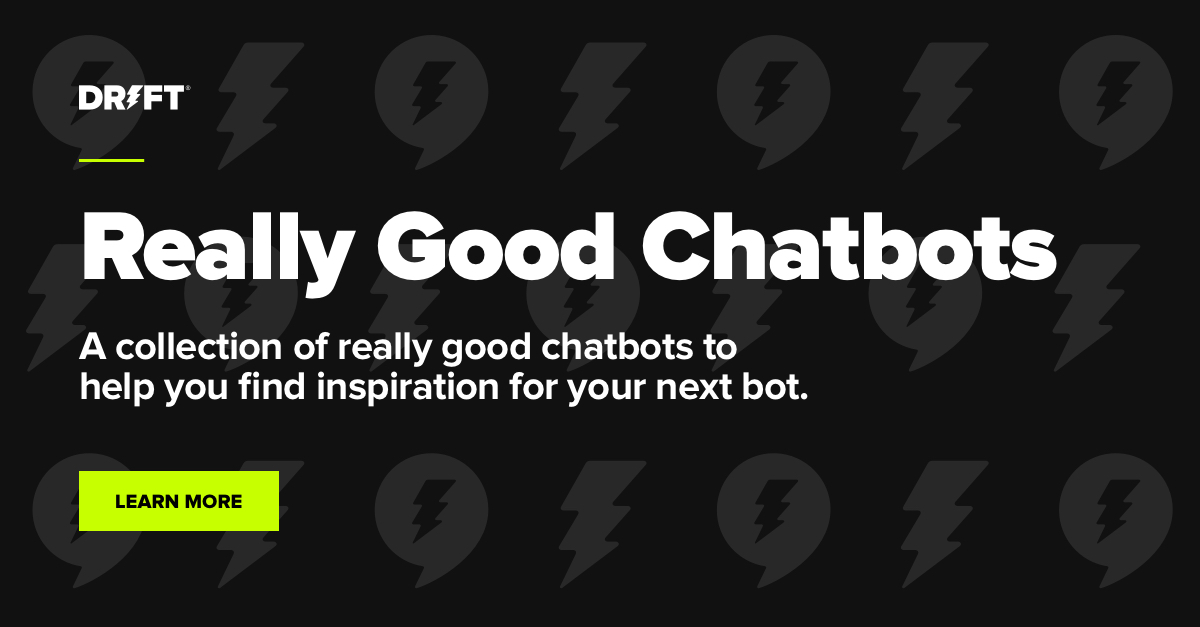Behind every deal, every new customer, and every renewal…is a conversation.
We would know. Last year, Drift’s customers had 41 million chats.
The results: Our conversations have led to 7.5 million leads, 650,000 booked meetings, $8 billion in influenced pipeline, and $1 billion in influenced revenue. (Yes, with a B!)
What’s our secret? Well, we believe conversations are all about building trust with buyers, growing relationships, and accelerating revenue. We send the right messages to our buyers — in the right place, at the right time.
To show you what I mean, I sat down with two of our in-house chat experts, Matt Michalke, Chat SDR Team Lead, and Alex Roy, Sales Development Manager. Today, we’re going to share with you all the insights we’ve gathered from our millions of conversations.
Here’s everything you need to know about creating value for your buyers with conversations.
We originally presented our findings in one of our webinars. If you want to watch the full presentation, click here. Otherwise, keep reading for all the insights 💡
What Makes a Good Conversation?
In today’s B2B landscape, a good conversation is one that revolves around the buyer.
Think about how much B2B buying now happens across digital channels. According to Gartner, by 2025, 80% of all B2B sales interactions will be digital. If your digital experience doesn’t cater to your buyers, they will instantly move on to your competitors.
So your conversations can’t just be sales pitches. You have to help your buyers buy.
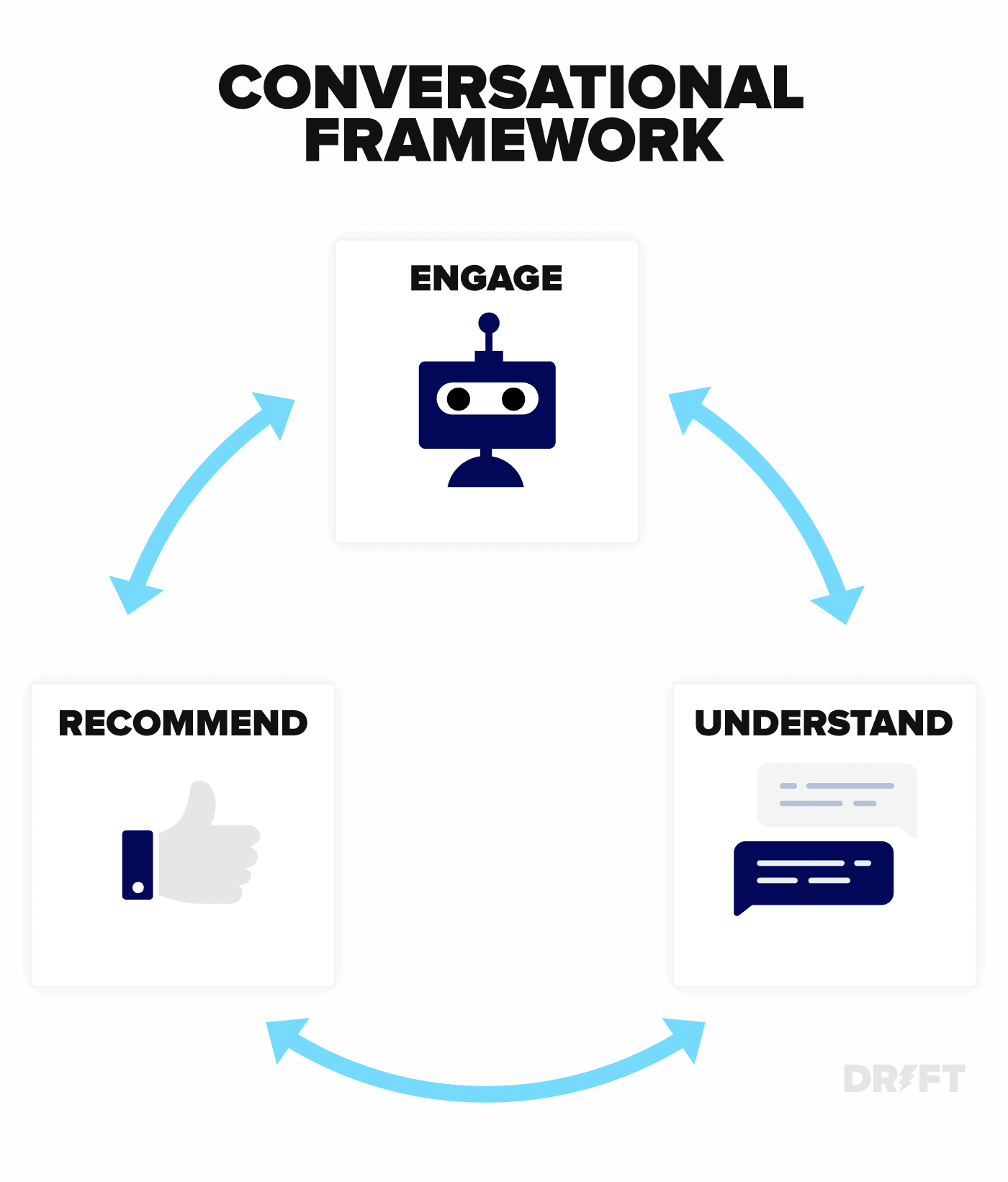
The best buyer conversations follow our three-step Conversational Framework:
- Engage: Hook your site visitors with a message that invites them into the chat.
- Understand: Find out why they are on your website and what their needs are.
- Recommend: With their goals in mind, recommend the best next step for them.
Keep in mind that you don’t need to hire hundreds of sales reps to have good conversations. With chatbots, you can engage all your site visitors and provide them with the immediacy they crave (a demand that increased 64% year-over-year in 2021).
Need proof? Here are three customers who are winning with their bot conversations 👇
1. Gong Engages Website Visitors
Right out of the gate, Gong’s standard bot engages you with a cheeky hook: “Woof! 🐶.” I mean, how can you not want to click that? It’s not random though because, if you click into chat, their bulldog mascot, Bruno, is all ready to answer your questions with a headset.
Keeping with the theme, the bot then asks, “What can I fetch for you?” which allows it to understand what you’re looking for and recommend the next course of action.
2. ConnectWise Targets Potential Buyers
While Gong’s chatbot targets all site visitors, ConnectWise triggers a different chatbot when they recognize a repeat visitor. The bot adds an extra layer of personalization to engage with you: “It looks like you’ve talked with us before. That’s awesome. Want to get reconnected with a rep?”
Because the bot understands you’ve come back to the website, it recommends a fast track to sales. But it also provides a path just for browsing, so there’s no pressure.
3. Okta Accelerates Deal Cycles
To make your chatbots as human as possible, you’re going to need AI. Okta does a great job of using AI chatbots to accelerate deal cycles. First, the bot engages you with a humorous hook: “Back again to check us out. Things must be getting serious.”
If the chat prompts don’t capture your needs or interests, you can type straight into the chat box. From there, the AI kicks in to understand your goals and recommend actions based on your qualification and intent.
What Makes a Really Good Live Chat?
Bots are great at starting conversations. They give you the flexibility you need to engage your website visitors without sacrificing a great customer experience. (Plus, they save tons of time for your sales reps.)
But bots just can’t compare to a live chat with a human. The majority, 46% of customers, prefer live chat over any other engagement channel. And conversations are 5x more likely to convert to leads when a human jumps in.
What bots really do is make sure your sales team can easily take over for the high-priority conversations — the ones that really need a human touch.
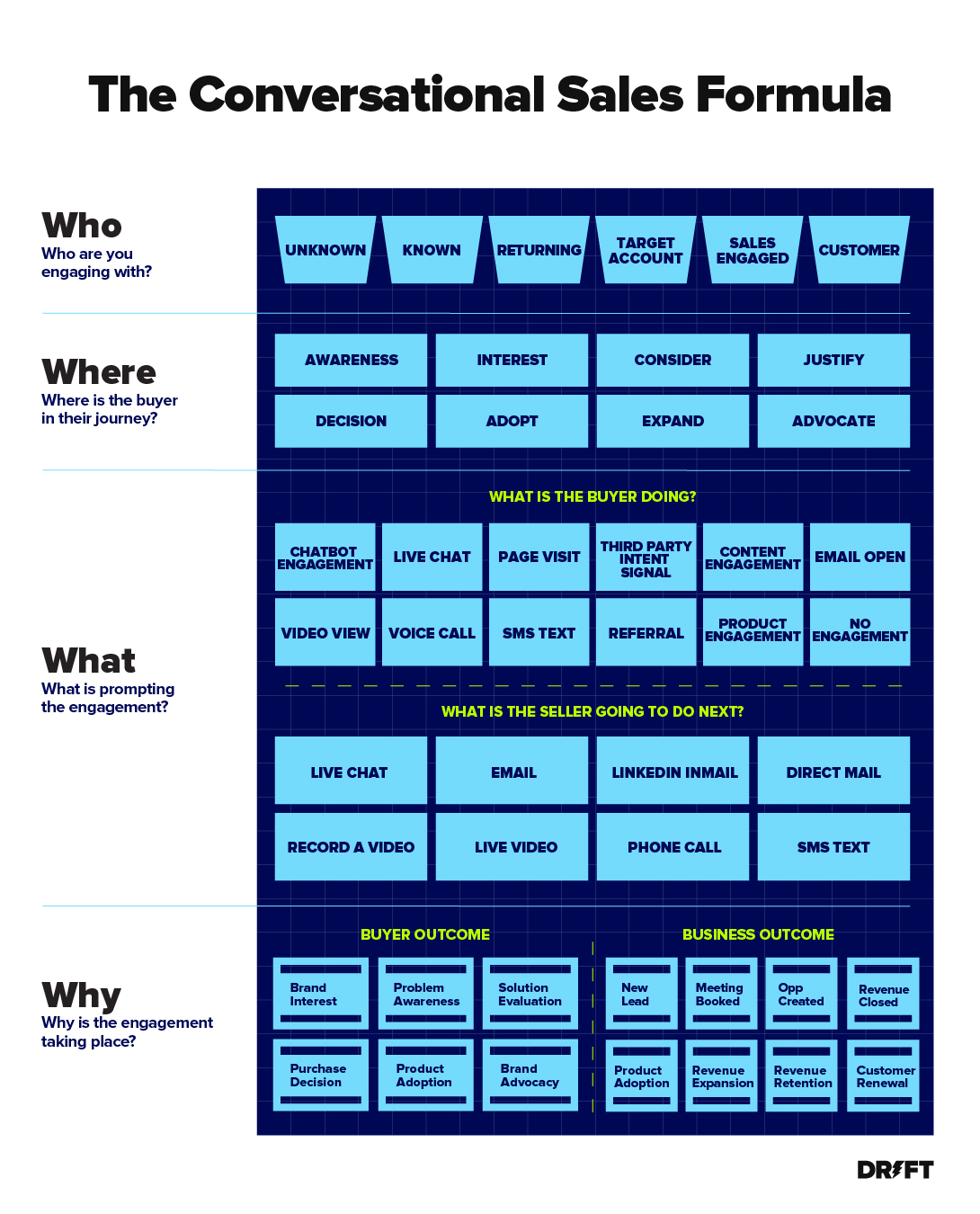
To make the most of every live chat conversation, we use the Conversational Sales Formula as a roadmap to understanding the buyer and driving the conversation from there. We focus on:
- Who is your audience? Is this an unknown visitor, someone who’s been here before, or one of your target accounts?
- Where are they in the buying journey? Did they just start looking for a solution or are they on the cusp of making a decision?
- What are they trying to accomplish? That is what you will need to help them with.
- Why are they on your website? And what is the best outcome for this conversation?
Want to see this in action? Here are three live chat examples where the Conversational Sales Formula either accelerated deals or could have helped drive the conversation further 👇
1. Add Value for the Buyer
In this conversation, our sales development rep (SDR), Tate, knows the buyer is a return visitor and acknowledges that in the hook: “Hey Chris — welcome back!”
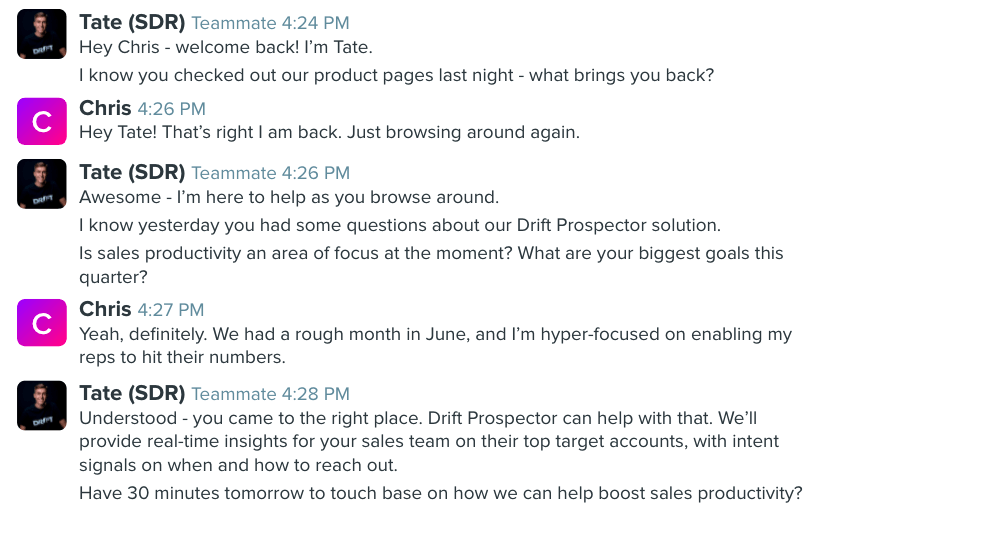
Chris’s response (“That’s right I am back. Just browsing around again.”) tells Tate that the buyer is in the research phase of the buying journey. Tate offers help and gauges interest through open-ended questions…until, eventually, Chris tells him his goal: “We had a rough month in June, and I’m hyper-focused on enabling my sales reps to hit their numbers.”
With that goal in mind, Tate goes over how a product can help hit that goal, adding value to the meeting ask.
2. Be Quick on the Uptake
This next example starts with a message we (and probably you, too) get all the time: “Are you a real person?” Nick does a great job of being friendly and humorous, eventually landing a demo.
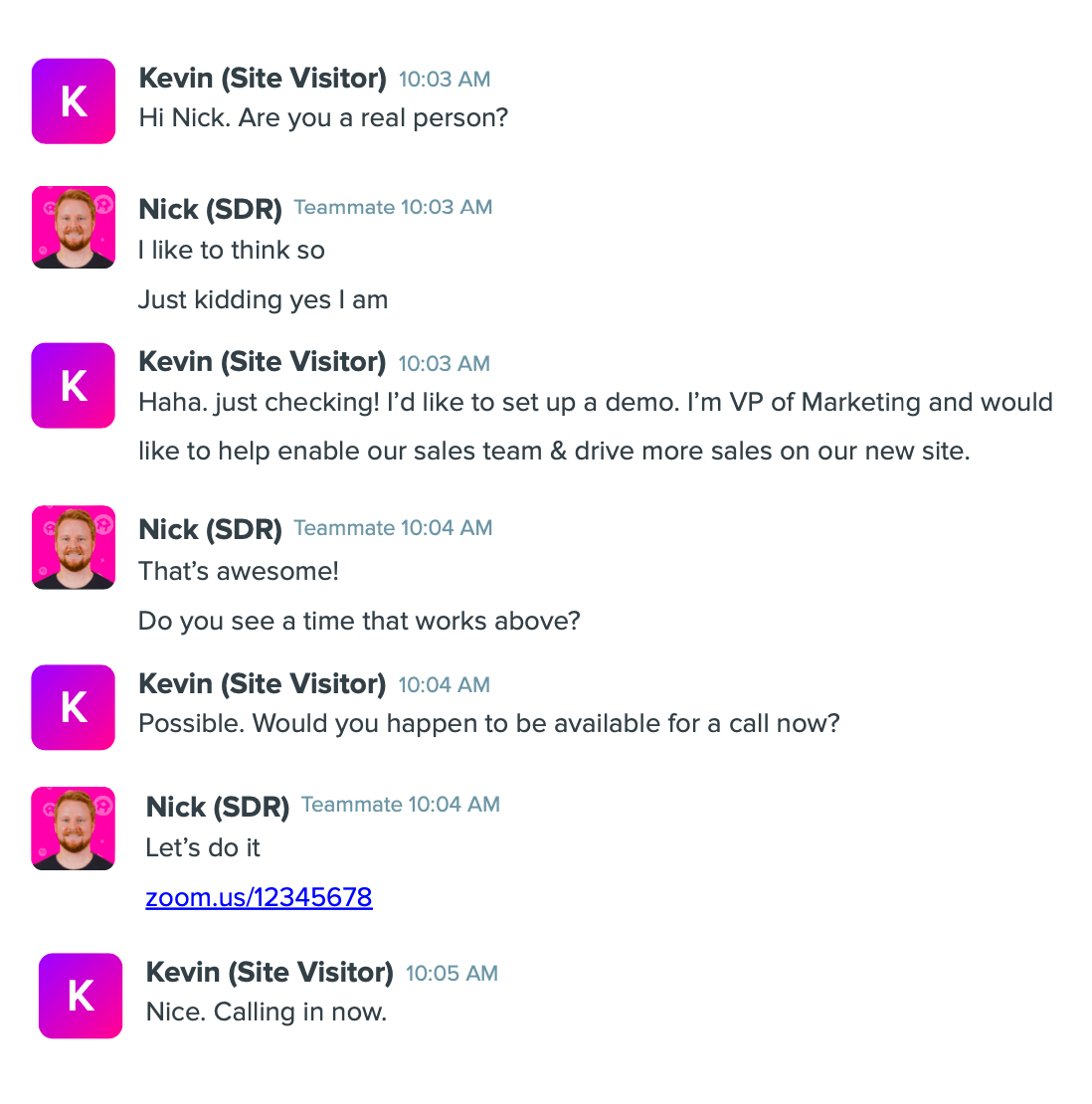
Here, speed is essential. You want to capitalize on a call request right away — that way, you can meet the buyer where they’re at and make it the best possible experience for them.
3. Act as a Trusted Advisor
Not every chat goes quite as smoothly as the last one. Don’t be discouraged, though. Less-than-perfect conversations are a great learning opportunity. Take this for example:

When it comes to live chat, you should always aim to be a trusted advisor to your buyers. Use all the intel you have about the buyer, so you’re not forcing them to clarify or repeat themselves (“We’re not really a mail marketing service.”). Do this by limiting how often you ask questions.
Ideally, you want the conversation to focus solely on the buyer and their needs. That means, if they’re not ready to move forward with the conversation, don’t push it. Get them what they need now, and that positive experience will pay off in the future.
Final Thought
There’s both an art and a science to having a great conversation.
Sure, you can get granular about testing your chatbot hooks and responses to maximize engagement. But the best conversations are also genuine and human. At the end of the day, it’s all about putting the customer first.
That’s how you will drive conversions, build pipeline, and deliver an amazing buying experience — one conversation at a time.





